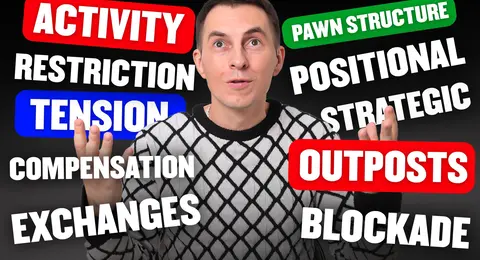How can you improve at chess and easily understand the strategic and positional rules of the game? There are so many positional principles in chess—like piece activity, pawn structure, outposts, exchange sacrifices, and more—that it can feel overwhelming.
Today, I’ll share with you the top 10 most important chess principles that will help you reach a 2000 ELO rating and beyond. Through various examples, you’ll be able to test your own thinking process and see how your ideas align both before and after learning these key principles.
By mastering these positional rules, you’ll be able to find the best moves quickly, maximize the activity of your pieces, and effectively restrict your opponent’s options.
And here’s the best part—these principles are universal! You can apply them to a wide range of positions and in all stages of the game, whether you’re in the opening, middlegame, or endgame.
Below, you can find the examples shown in the video:






